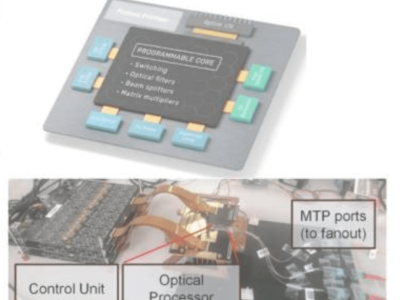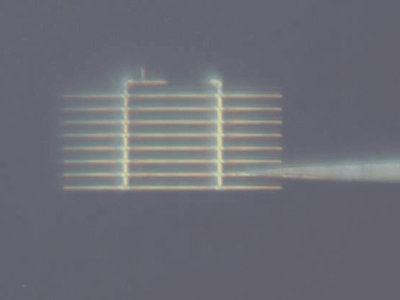
Uncrackable encryption comes from the space
Interleaved photons generated by a quantum source in space could ensure tap-proof communication in security-relevant areas. A team of scientists at the Fraunhofer IOF has developed such a space-compatible, robust and high-performance quantum source. Its goal is to send the first European quantum satellite into space in about four years. The quantum source is stable enough to function permanently and reliably under the extreme conditions of space. With the aid of a nonlinear crystal, which is hit by a laser beam, the device, the size of a bread box, generates 300,000 entangled photon pairs per second. With these twin light particles, sensitive communication can be securely encrypted in the future. The principle behind it: The two photons have an entangled polarization, regardless of how far apart they are from each other. Based on this, keys can be established between two communication partners, who betray both immediately if someone tries to intercept their communication. If someone unauthorized intervenes, the entanglement disintegrates, and the access is verifiable.
Of course, the entangled photons could also reach their destinations via fiber optic cables, such as the telephone line. But this would greatly limit the range and disrupt the important entanglement. The Jena researchers say that the better solution would be to send the quantum source with a satellite into the low Earth orbit, where it can send the double light particles to Earth from 400 kilometers above the Earth’s surface with as little interference as possible.
“The greatest challenges were the stability and performance of the quantum source,” explains Dr. Oliver de Vries, project manager at Fraunhofer IOF. “The loss rate is high because of the passage through the earth’s atmosphere. This is why it is important to generate as many entangled twin photons as possible so that a maximum of them reach the communication partners on Earth.” A key always requires several photon pairs. “We optimized the stability of the quantum source through a special design, effective inorganic bonding processes and robust materials that expand as little as possible when the temperature changes,” de Vries continues.
The technology is already meeting with great interest, especially among banks and government organizations, for whom secure communication is essential. However, until quantum encryption finds its way into application in three to five years, the necessary infrastructure for exchanging keys has yet to be created. For example, the communication partners would have to receive the light particles with a telescope, which in turn would have to be integrated into the IT structure. The researchers already have plans for this as well. “It would be conceivable to have a business model in which Fraunhofer equips the satellite with a quantum source, while external partners offer the reception infrastructure and sell the keys,” explained de Vries. The declared goal of the research team is to send the first European quantum satellite into space in about four years.
Related articles:
Post-quantum encryption method uses RF parameters for key generation
Cryptographic standards released for secure access control
Infineon preparing post-quantum cryptography for cars
Europe to build commercial laser-based quantum security system in the sky
 If you enjoyed this article, you will like the following ones: don't miss them by subscribing to :
eeNews on Google News
If you enjoyed this article, you will like the following ones: don't miss them by subscribing to :
eeNews on Google News




